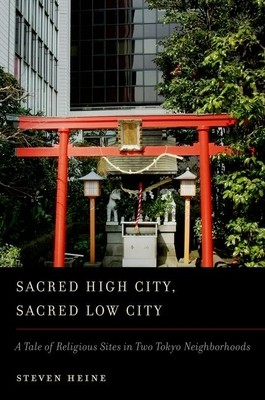
- We will send in 10–14 business days.
- Author: Steven Heine
- Publisher: Oxford University Press, USA
- ISBN-10: 0199861447
- ISBN-13: 9780199861446
- Format: 15.5 x 23.1 x 1.5 cm, softcover
- Language: English
- SAVE -10% with code: EXTRA
Reviews
Description
In Sacred High City, Sacred Low City, Steven Heine argues that lived religion in Japan functions as an integral part of daily life; any apparent lack of interest masks a fundamental commitment to participating regularly in diverse, though diffused, religious practices. The book uses case studies of religious sites at two representative but contrasting Tokyo neighborhoods as a basis for reflecting on this apparently contradictory quality. In what ways does Japan continue to carry on and adapt tradition, and to what extent has modern secular society lost touch with the traditional elements of religion? Or does Japanese religiosity reflect another, possibly postmodern, alternative beyond the dichotomy of sacred and secular, in which religious differences as well as a seeming indifference to religion are encompassed as part of a contemporary lifestyle?
EXTRA 10 % discount with code: EXTRA
The promotion ends in 19d.17:39:38
The discount code is valid when purchasing from 10 €. Discounts do not stack.
- Author: Steven Heine
- Publisher: Oxford University Press, USA
- ISBN-10: 0199861447
- ISBN-13: 9780199861446
- Format: 15.5 x 23.1 x 1.5 cm, softcover
- Language: English English
In Sacred High City, Sacred Low City, Steven Heine argues that lived religion in Japan functions as an integral part of daily life; any apparent lack of interest masks a fundamental commitment to participating regularly in diverse, though diffused, religious practices. The book uses case studies of religious sites at two representative but contrasting Tokyo neighborhoods as a basis for reflecting on this apparently contradictory quality. In what ways does Japan continue to carry on and adapt tradition, and to what extent has modern secular society lost touch with the traditional elements of religion? Or does Japanese religiosity reflect another, possibly postmodern, alternative beyond the dichotomy of sacred and secular, in which religious differences as well as a seeming indifference to religion are encompassed as part of a contemporary lifestyle?


Reviews